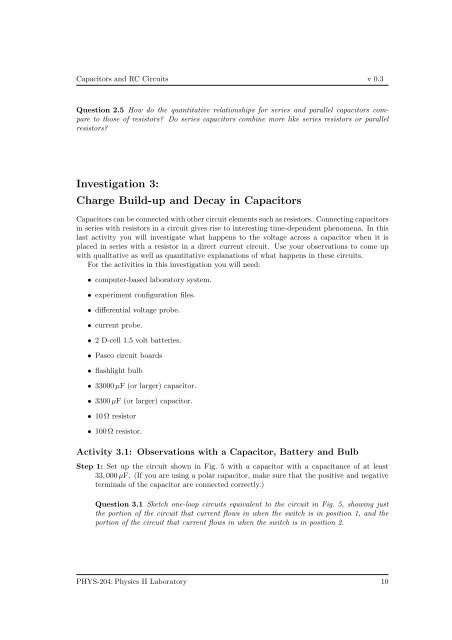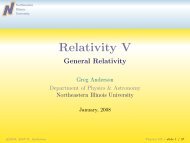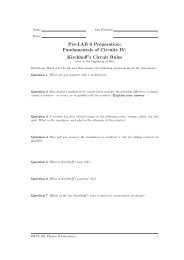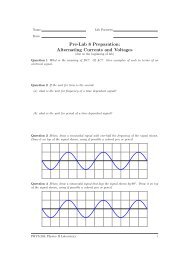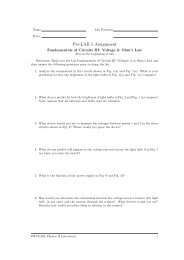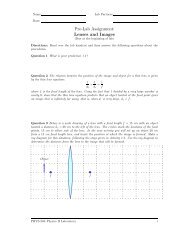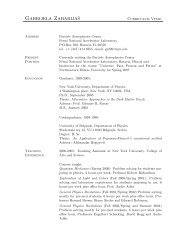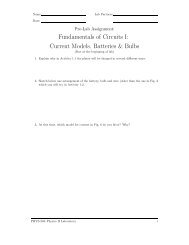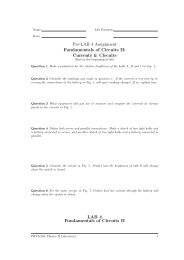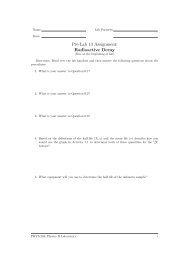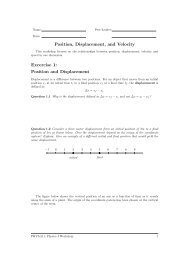Pre-Lab 7 Assignment: Capacitors and RC Circuits
Pre-Lab 7 Assignment: Capacitors and RC Circuits
Pre-Lab 7 Assignment: Capacitors and RC Circuits
- No tags were found...
Create successful ePaper yourself
Turn your PDF publications into a flip-book with our unique Google optimized e-Paper software.
<strong>Capacitors</strong> <strong>and</strong> <strong>RC</strong> <strong>Circuits</strong> v 0.3Question 2.5 How do the quantitative relationships for series <strong>and</strong> parallel capacitors compareto those of resistors? Do series capacitors combine more like series resistors or parallelresistors?Investigation 3:Charge Build-up <strong>and</strong> Decay in <strong>Capacitors</strong><strong>Capacitors</strong>canbeconnectedwithothercircuitelementssuchasresistors. Connectingcapacitorsin series with resistors in a circuit gives rise to interesting time-dependent phenomena. In thislast activity you will investigate what happens to the voltage across a capacitor when it isplaced in series with a resistor in a direct current circuit. Use your observations to come upwith qualitative as well as quantitative explanations of what happens in these circuits.For the activities in this investigation you will need:• computer-based laboratory system.• experiment configuration files.• differential voltage probe.• current probe.• 2 D-cell 1.5 volt batteries.• Pasco circuit boards• flashlight bulb• 33000µF (or larger) capacitor.• 3300µF (or larger) capacitor.• 10Ω resistor• 100Ω resistor.Activity 3.1: Observations with a Capacitor, Battery <strong>and</strong> BulbStep 1: Set up the circuit shown in Fig. 5 with a capacitor with a capacitance of at least33,000µF. (If you are using a polar capacitor, make sure that the positive <strong>and</strong> negativeterminals of the capacitor are connected correctly.)Question 3.1 Sketch one-loop circuits equivalent to the circuit in Fig. 5, showing justthe portion of the circuit that current flows in when the switch is in position 1, <strong>and</strong> theportion of the circuit that current flows in when the switch is in position 2.PHYS-204:Physics II <strong>Lab</strong>oratory 10


